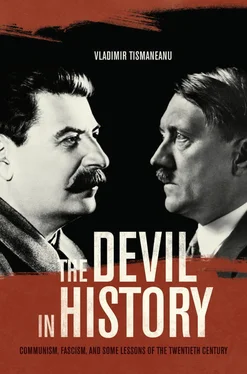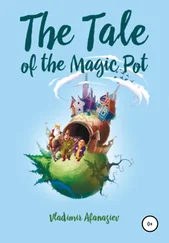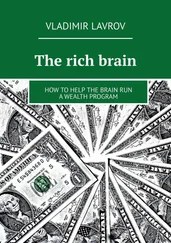In Nazi Germany terror was unleashed mainly against minorities (Jews, Roma, the disabled, or gays) and foreign populations. In the Soviet Union, terror brought about two worlds: the Soviet social body, made up of politically validated people, and the gulag, with the party and its repressive institutions mediating between the two realms. While in Nazi Germany the regime sought “its victims mainly outside the Volksgemeinschaft , the Soviet populace was the main victim of its own regime.” In other words, the war conducted by Stalin and the Leninist parties was internal, “a catastrophe ostensibly launched as a social upheaval, appropriating the idiom of class struggle and civil war.” 99Along similar lines, Richard Overy provides an excellent definition of the gulag, which in his view “symbolizes the political corruption and hypocrisy of a regime formally committed to human progress, but capable of enslaving millions in the process.” 100The state-building Stalinist blueprint, the one that became the core of the “civilizational transfer” implied by exporting revolution or Sovietization, was “dialectically” bent on purification and inclusiveness. This paradox is best expressed by the contrast between the 1936 constitution’s description of a society made up of “non-antagonistic classes” and Stalin’s November 1937 call for eradicating not just the enemies of the people but also their “kith and kin.” 101
One can conclude that, in the Soviet Union at different stages, certain groups were indeed designated targets, but the exercise of terror applied to individuals of all social origins (workers, peasants, intellectuals, party and military cadres, former middle and high bourgeois, priests, even secret police officials). Soviet terror had a distinctly random character, for its sole purpose was the building of Communism through the total homogenization of society. Its rationale was the moral-political unity of the community. From this point of view, the violence inflicted on the population was ideologically functionalized. It never achieved the industrial scope of the Holocaust. It was, however, an end in itself. It was the other face of the Bolshevik regime’s “modern agenda of subjectiviztion.” Those individuals who failed to become “conscious citizens engaged in the program of building socialism of their own will,” those who failed to understand their obligations as members of “the first socialist state,” those who erred in revolutionary vigilance, in other words “the failed hermeneuticists” of the great leap out of the empire of necessity became excess to the needs of the Soviet state. The Bolsheviks were interested in refashioning the human soul. The life of the individual could make sense only if it immersed itself in the “general stream of life” of the Soviet collective. 102It is no surprise that, as Orlando Figes remarks, the Russian word for conscience (sovest’) as a private dialogue with the inner self almost disappeared from official use after 1917. On October 26, 1932, Stalin described the full nature of the Bolshevik transformation: “Your tanks will be worth nothing if the soul (dusha) in them is rotten. No, the ‘production’ of souls is more important than the production of tanks.” 103
In the summer of 1937, at the height of the Great Terror, the output of the Bolshevik industry of souls was already on display: over 40,000 participants gathered for a physical culture parade on the Red Square entitled “The Parade of the Powerful Stalin Breed [plemia]” (my emphasis). At the end of the celebrations of the first decade of the existence of Fascist Italy, the newspaper Gioventù fascista gave an almost archetypical description of the totalitarian body politic: “With Fascism, a crowd has become a harmony of souls, a perfect fit of citizens actively participating in the great life of the State…. [T]his was a crowd with self-knowledge, aware of its obedience, its faith, and its fighting mettle, a crowd serene and secure, trusting in its Leader, in a State…. This was no faceless throng, but an image given shape and order by spirits educated in the epic of these new times; not an amorphous mass, but an amalgam of fresh values and intelligence.” 104The imagery employed by the Italian journalists would have surely been fitting for the rows of thousands of Soviet New Men and Women participating in the parade of the “powerful Stalin breed,” expressing the joy of these crowds celebrating their happiness and fortune to be offspring of utopia made reality under the guidance of the beloved Helmsman (Vozhd). What is striking in the passage, from the point of view of our discussion of Fascism and Communism, is the constancy of the signified despite the interchangeability of the key signifiers.
Even when it did not take on a directly exterminist profile (e.g., mass executions, death marches, and state-engineered starvation), Soviet terror took the form of forced labor whose economic utility was highly questionable. I disagree with Dan Diner on this point, for I consider that forced labor in the gulag had a primarily pedagogical and corrective character. In both Nazism and Stalinism, the camps fundamentally served an ideological function; all other aspects that could be assigned to them were epiphenomena to the ideological driving force of the two dictatorships. 105In the Soviet Union, the labor camps were “a cultural model,” a “peculiar wedding of discipline and representation,” which ensured that those inside would be trained and those outside terrorized. Most importantly, this negative model of organization within the Communist space was employed for the structuring and disciplining of even positive social milieus, such as factories and universities. 106Until 1956, the gulag was the blueprint of human management in the USSR. As Orlando Figes notes, it was “more than a source of labor for building projects like the White Sea Canal. It was itself a form of industrialization.” 107I would go even further: the gulag was the normative design at the basis of the Communist project of modernity, the original source of the misdevelopment brought about by all Soviet-type regimes.
Exploitation by the state had, indeed, its productive purpose, but it was a consequence and an extension of the institution of the camp and deportation site as places of anthropological transformation. It is true that “the Final Solution was a project annulling even what are broadly considered universally valid standards of self-preservation.” 108But I think it is misguided to force upon Communist terror qualifications on the basis of circumstances and utility while ignoring its purifying and standardizing motifs. 109To paraphrase Timothy Snyder, Stalinism’s project of self-colonization by mass terror was founded upon the indifference to individual human life. Stalinism and Nazism’s terror were “built into the world view of each dictator and each dictatorship; it was essential to the system, not a mere instrument of control, and it was practiced at every level of society.” 110Under Communism mass murder became a certainty because of the inevitable violence resulting from the corroboration of the principle of the state (gosudarstvennost) and the struggle to create order out of what Leninist leaders perceived as stikhiinost , social chaos. 111
Moreover, Timothy Snyder warns that if we single-mindedly focus on Auschwitz and the gulag, “we fail to notice that over a period of twelve years, between 1933 and 1944, some 12 million victims of Nazi and Soviet mass killing policies perished in a particular region of Europe, one defined more or less by today’s Belarus, Ukraine, Poland, Lithuania, and Latvia.” 112Snyder, while stressing the singularity of Nazi atrocities, demonstrates what he calls “the absence of economics”: “Although the history of mass killing has much to do with economic calculation, memory shuns anything that might seem to make murder appear rational…. What is crucial is that the ideology that legitimated mass death was also a vision of economic development. If there is a general political lesson of the history of mass killing, it is the need to be wary of what might be called privileged development: attempts by states to realize a form of economic expansion that designates victims, that motivates prosperity by mortality [my emphasis].” 113In Bloodlands Snyder takes his point further. He argues, in his reassessment of the monstrous chasm generated by the exterminist policies of Stalinism and Nazism, for a revision of our premises for comprehending such cataclysm: “Fourteen million people were deliberately murdered by two regimes over twelve years. This is the moment that we have scarcely begun to understand let alone master.” 114During the twentieth century, “history had truly become a delinquent.” 115Snyder is right: the only solution to this pathology of modernity is “the ethical commitment to the individual.” This is also the fundamental lesson of the revolutions of 1989, the legacy of dissidents like Leszek Kołakowski, Jan Patočka, Václav Havel, Jacek Kuroń, Bronisław Geremek, Adam Michnik, János Kis, and George Konrád. That is exactly why I consider the revolutions of 1989 the endpoint of the historical era ruled by utopia.
Читать дальше












